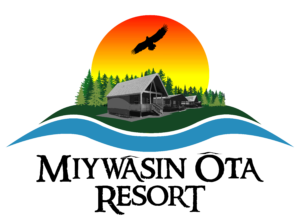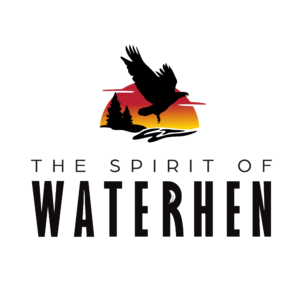Waterhen’s History
Waterhen Lake First Nation and Treaty Six
The Waterhen Lake First Nation (WLFN) was one of the last bands to join Canada’s official treaties — they didn’t need the government support because the land surrounding Waterhen Lake was so plentiful. The treaty adhesion was officially signed on November 8, 1921 after nearly two full days of discussion.
The reserve, Waterhen 130, is 7,972 hectares and located 39 km north of the community of Meadow Lake, Saskatchewan, Canada. The WLFN now has 2,145 Band members as of December 2022, with 1,011 members residing on the reserve and 1,132 members residing at locations off-reserve.
Waterhen Lake
Waterhen Lake is a stunning 10,000 hectares in size and protected within the Meadow Lake Provincial Park. Fed mainly by Waterhen River, you can find an abundance of Burbot, Northern pike, Walleye and Yellow perch in it’s waters.
The lake is situated within a boreal plain ecozone of Canada, meaning it’s vegetation and ecosystems have been similar for the past 5,000 years. For an immersive experience of local flora and fauna, the Meadow Lake Provincial Park Boreal Trail offers an incredible 135 km of hiking with multiple entry and exit points.
Historical Transportation
On Waterhen Lake, the most common type of transportation has traditionally been birchbark canoes, especially for moving cargo. These were fashioned from a large sheet of birch bark, then the “ribs” and seats for the boat were added for stability.
Before vehicles came to Waterhen Lake, almost every family had a team of horses and a wagon. In the wintertime, the horse team was hooked up to a sleigh to easily cross the snow. Dog teams were also used for cross-country trips and you can still compete in dog sledding competitions today.
Image credit: Birch bark freight canoe, Mackenzie River, Northwest Territories (Courtesy of Canada. Department of the Interior. Library and Archives Canada, PA-042083)
Plains Cree Culture
The traditional culture of the Waterhen Lake Cree is full of colour and passion. Coming from the wider Plains Cree and Woodland Cree cultures, traditional dances include the round dance, sun dance, prairie chicken dance, and grass dance.
From the rhythmic beats of the drum to the intricate footwork of our dancers, our annual Pow Wow is a vibrant display of cultural beauty. We invite you to join us for this unforgettable gathering to dance, sing, socialize, and honour our culture together.
Community Development
The Waterhen Lake First Nation Development Corporation (WLFNDC) is pursuing good business governance away from community politics. By staying at the Miywâsin Ôta Resort, you’re putting money back in the hands of the people who have protected this land for hundreds of years.
The WLFNDC is committed to it’s goals of strengthening businesses, creating economic prosperity, and diversifying businesses through a culturally sustainable approach. Beyond the Resort, the WLFNDC also owns Waters Edge Eco Lodge, Waterhen Lake General Store, and is invested in Kiyanaw Askiy Construction, along with forestry and and industrial development groups. Learn more on the official WLFNDC website.
Local Wildlife
The area surrounding the Resort is full of wildlife, from Bald Eagles to River Otters. Birders will enjoy the majesty of the Great Horned Owl and colourful Bufflehead duck while hunters will be impressed by Red-Tailed Hawks and Red Fox in the area. You might even catch a glimpse of the rare Northern Pygmy Owl.
If you’re hunting while staying at the Resort, we can help you find an Indigenous outfitting guide to support you on your adventure in trophy-worthy White-Tailed Deer, Black Bear, and Moose hunting near the area.

